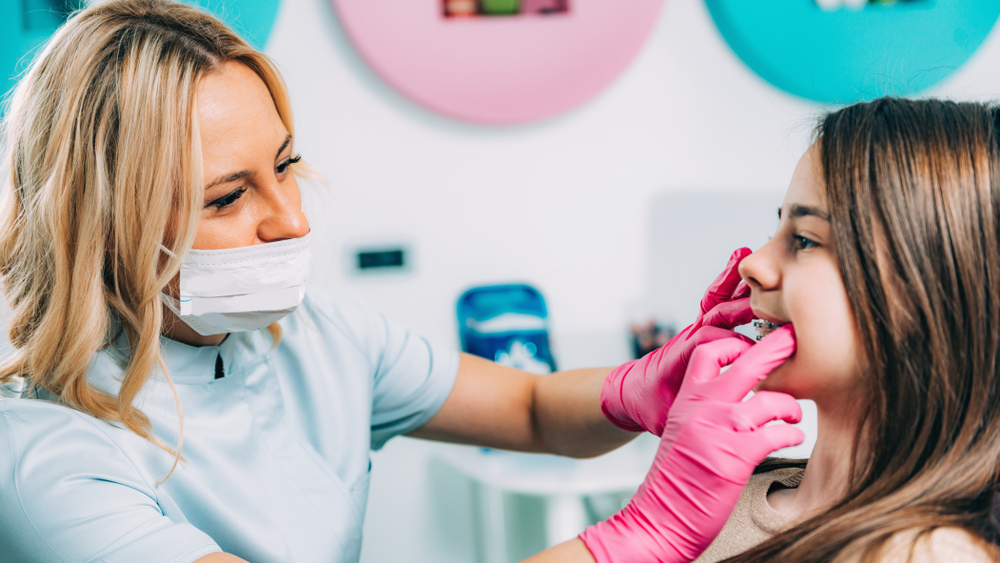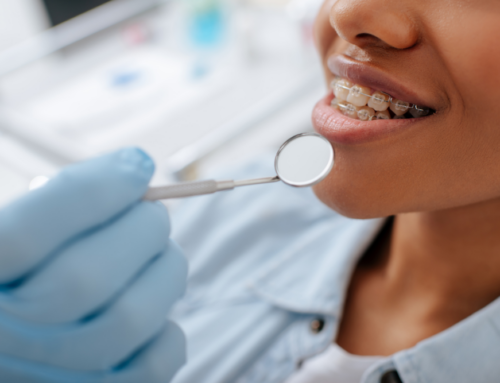When it comes to orthodontic treatments, there’s an abundance of information out there—some accurate and some, unfortunately, misleading. In this guide, we’ll aim to set the record straight and provide clear, concise insights into the world of orthodontics.
What is Orthodontic Treatment?
Orthodontics, a specialized discipline of dentistry, focuses on aligning and straightening teeth using wires and brackets, applying gentle pressure to the teeth to move them into a particular position. The discipline has expanded over the past few decades and can treat a much wider variety of cases than before. Far beyond cosmetic appeal, orthodontic treatments offer significant health benefits and can help prevent severe tooth decay, gum and jaw diseases.

The Different Types of Orthodontic Treatment
- Traditional Braces: These are what many people think of when they hear “braces.” Made of metal, these braces are brackets fixed to the teeth with a glue-like base, connected with wires that are regularly tightened to shift teeth into their proper position.
- Ceramic Braces: Functionally similar to traditional braces, ceramic braces come with clear or tooth-colored brackets, making them far less noticeable. They’re a popular choice among adults and teenagers looking for a more aesthetic option.
- Invisalign: A modern twist on braces, Invisalign consists of a series of clear plastic trays designed to align your teeth over time. Custom-made to fit snugly over your teeth, each tray is slightly different to adjust the position of your teeth gradually.
- Lingual Braces: Like traditional braces but with a twist: they’re placed on the inside (lingual side) of your teeth. They’re completely hidden and are a great option for those who want the functionality of traditional braces without the visible hardware.
- Self-Ligating Braces: These braces use a specialized clip to hold the archwire in place without the need for elastic bands. This can reduce friction, potentially offering a quicker and more comfortable treatment experience.
- Retainers: After undergoing orthodontic treatment, retainers help maintain the new position of your teeth. They’re custom-made using clear plastic or wires and are essential for preserving the results of your treatment.
- Jaw Repositioning: This treatment is utilized for patients with an irregular jaw structure. Appliances are worn on either the top or lower jaw, teaching the jaw to close in a more beneficial position.
The Truth About Braces
Despite their long-standing history, numerous myths surround traditional braces.
- Myth: Braces are only for children or teenagers. Truth: More adults are now opting for braces, understanding that it’s never too late to improve one’s dental health and appearance.
- Myth: Braces are painfully uncomfortable. Truth: Modern braces are more comfortable than ever. While there’s a period of adjustment, any discomfort usually subsides quickly.
- Myth: Braces are purely cosmetic. Truth: Beyond a perfect smile, braces can correct jaw alignment issues, prevent decay, and lead to healthier gums.
Clearing the Air: Common Myths About Orthodontic Treatment
When it comes to orthodontic treatments, there’s an abundance of information out there—some accurate and some, unfortunately, misleading. In this guide, we’ll aim to set the record straight and provide clear, concise insights into the world of orthodontics.
What is Orthodontic Treatment?
Orthodontics, a specialized discipline of dentistry, focuses on aligning and straightening teeth using wires and brackets, applying gentle pressure to the teeth to move them into a particular position. The discipline has expanded over the past few decades and can treat a much wider variety of cases than before. Far beyond cosmetic appeal, orthodontic treatments offer significant health benefits and can help prevent severe tooth decay, gum and jaw diseases.
The Different Types of Orthodontic Treatment
- Traditional Braces: These are what many people think of when they hear “braces.” Made of metal, these braces are brackets fixed to the teeth with a glue-like base, connected with wires that are regularly tightened to shift teeth into their proper position.
- Ceramic Braces: Functionally similar to traditional braces, ceramic braces come with clear or tooth-colored brackets, making them far less noticeable. They’re a popular choice among adults and teenagers looking for a more aesthetic option.
- Invisalign: A modern twist on braces, Invisalign consists of a series of clear plastic trays designed to align your teeth over time. Custom-made to fit snugly over your teeth, each tray is slightly different to adjust the position of your teeth gradually.
- Lingual Braces: Like traditional braces but with a twist: they’re placed on the inside (lingual side) of your teeth. They’re completely hidden and are a great option for those who want the functionality of traditional braces without the visible hardware.
- Self-Ligating Braces: These braces use a specialized clip to hold the archwire in place without the need for elastic bands. This can reduce friction, potentially offering a quicker and more comfortable treatment experience.
- Retainers: After undergoing orthodontic treatment, retainers help maintain the new position of your teeth. They’re custom-made using clear plastic or wires and are essential for preserving the results of your treatment.
- Jaw Repositioning: This treatment is utilized for patients with an irregular jaw structure. Appliances are worn on either the top or lower jaw, teaching the jaw to close in a more beneficial position.
The Truth About Braces
Despite their long-standing history, numerous myths surround traditional braces.
- Myth: Braces are only for children or teenagers. Truth: More adults are now opting for braces, understanding that it’s never too late to improve one’s dental health and appearance.
- Myth: Braces are painfully uncomfortable. Truth: Modern braces are more comfortable than ever. While there’s a period of adjustment, any discomfort usually subsides quickly.
- Myth: Braces are purely cosmetic. Truth: Beyond a perfect smile, braces can correct jaw alignment issues, prevent decay, and lead to healthier gums.
The Truth About Invisalign
Invisalign has surged in popularity, but with its rise come several misconceptions.
- Myth: Invisalign trays can be worn sporadically. Truth: For best results, they should be worn 20-22 hours a day, only removed for eating and brushing.
- Myth: Invisalign works faster than traditional braces. Truth: Treatment duration varies based on the individual’s needs. Some cases might be quicker with Invisalign, while others might benefit more from traditional braces.
- Myth: Invisalign is only for minor dental issues. Truth: Advances in the technology mean Invisalign can treat a wide range of dental alignment issues, from simple to complex.
Orthodontic Treatment Is The Most Effective Method of Straightening Your Teeth
While there are plenty of products on the market that promise straighter teeth, none can match the effectiveness and precision of professional orthodontic treatment. Whether through traditional braces, Invisalign, or other advanced methods, orthodontics offers a tested and trusted solution for achieving optimal oral health.
When in doubt, always consult with a trusted orthodontist. If you’re in Fort Worth, consider paying a visit to Ahava Orthodontics. We’re equipped with the knowledge and expertise to guide you on your journey to a flawless smile.




